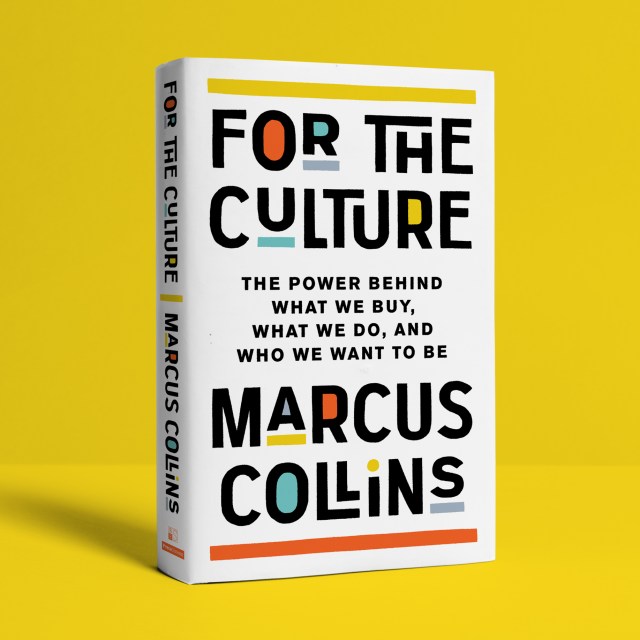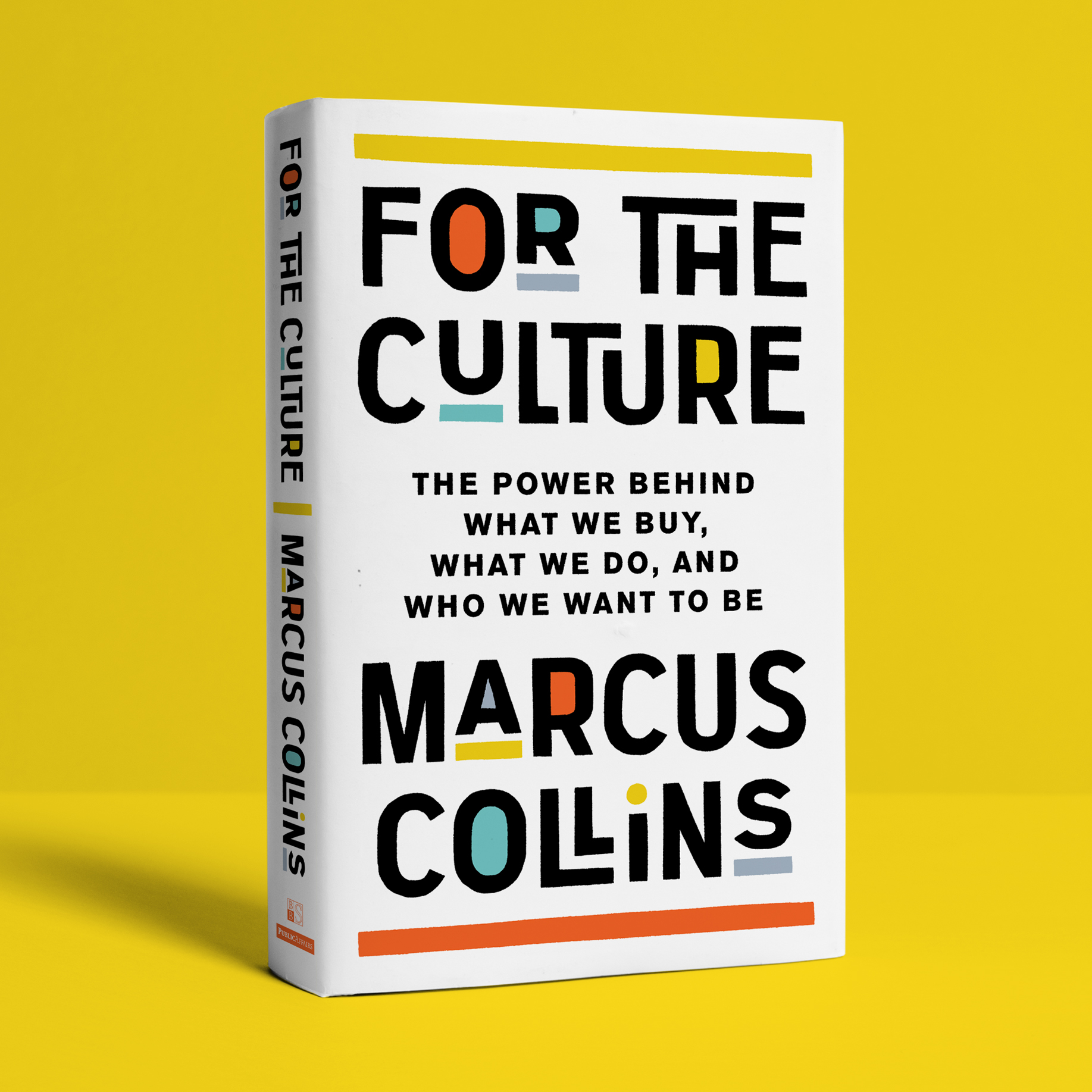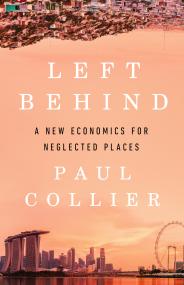Promotion
Use code FALL24 for 20% off sitewide!
For the Culture
The Power Behind What We Buy, What We Do, and Who We Want to Be
Contributors
Formats and Prices
Price
$30.00Price
$39.00 CADFormat
Format:
- Hardcover $30.00 $39.00 CAD
- ebook $17.99 $22.99 CAD
- Audiobook Download (Unabridged) $27.99
- Trade Paperback $19.99 $25.99 CAD
This item is a preorder. Your payment method will be charged immediately, and the product is expected to ship on or around May 2, 2023. This date is subject to change due to shipping delays beyond our control.
Also available from:
In For the Culture, Marcus Collins argues that true cultural engagement is the most powerful vehicle for influencing behavior. If you want to get people to move, you must first understand the underlying cultural forces that make them tick.
Collins uses stories from his own work as an award-winning marketer—from spearheading digital strategy for Beyoncé, to working on Apple and Nike collaborations, to the successful launch of the Brooklyn Nets NBA team—to break down the ways in which culture influences behavior and how readers can do the same. With a deep perspective built on a century’s worth of data, For the Culture gives readers the tools they need to inspire collective change by leveraging the cheat codes used by some of the biggest brands in the world.
-
Winner of the Thinkers50’s Radar Award
A Porchlight Business Book Award winner
NABJ Outstanding Book Award
Longlisted for the Non-Obvious Book Awards
Longlisted for BookPal’s 2023 OWL Awards
One of Radical Candor’s Inspiring Books to Help You Become a Better Leader In 2023
A Thinkers50 best new management book of 2023
A Forbes Must Read Book for Spring
A Next Big Idea Club Must-Read Book
An Amazon Best Book of the Year So Far
-
“What is culture, exactly? Mr. Collins calls it the operating system by which we live, and includes identity, shared language, social norms and cultural production—art, movies, fashion and branded products. To help develop this picture he hauls in the big guns of social psychology, anthropology and even French philosophy, marshaling such forces in an elegantly friendly writing style.”Wall Street Journal
-
“Perceptive…[Collins] has a knack for delivering his smart ideas in accessible prose. This is a superior program on how the business world can use the interplay between culture, consumption, and identity to their advantage.”Publishers Weekly
-
“[Collins] offers plenty of food for thought about how the social landscape is evolving… With personal stories and a dry wit, he bridges the gap between cultural theory and marketing practice.”Kirkus
-
“A must-have for any leader, marketer, or simply any person who wants to understand how culture impacts the world around us and how they can [create] impactful contributions to the tapestry of what shapes human connection.”God-Is Rivera, VP, Inclusive Marketing, Disney Media & Entertainment
-
"Marcus Collins does much more here than identify potent drivers of human conduct such as values, ideologies, norms, and trends. With compelling prose and vivid accounts, he locates their common source in the concept of culture—which he beautifully dissects and knits back together for readers like a skilled surgeon."Robert Cialdini, author of Influence and Pre-Suasion
-
"Diving deeply into what moves real people, not personas and archetypes, Collins gives us a look into cultural nuances we can use to make meaningful connections and drive action. This book is insightful, enlightening, and sure to challenge any preconceived notions about communicating with the world. Talk the talk, walk the walk, and always do it for the culture.”Jay Norman, Global Head of Music Marketing, Spotify
-
"An engrossing book that will make you better at any job. Warning: you might be up all night reading it."Scott Galloway, NYU professor of marketing and author of Adrift
-
"If you’ve ever wondered how some of the most successful businesses and brands in the world have caught fire and created enduring relevance, this book is well worth the read. In For The Culture, Collins provides an insightful blueprint for harnessing the power of identity and culture to ultimately build brand love and inspire action. After reading Collins' well-crafted gem, you will never go about marketing, advertising, or building communities quite the same way."Kenny Mitchell, CMO, Snap
-
"We all know that culture can be a vehicle for influence, but in For the Culture, Collins shows us how. Collins provides fascinating deep-dives into the power of cultural community and illustrates how we can use it to change minds and inspire action."Jonah Berger, Wharton Professor and bestselling author of Contagious, The Catalyst, and Magic Words
-
“Creating a brand that meets customers at the intersection of the cultural and commerce is the key to connecting with customers in a more authentic and meaningful way. For The Culture shows how companies can build brands that resonate with their market on a deeper level and create a strong emotional connection that will reward their business in the fight for their lifetime value.”Tariq Hassan, Chief Marketing & Customer Experience Officer, McDonald’s USA
-
"I can confidently say that this book is a game changer. Collins's insights on the role of culture as the kindling to the brushfire of public opinion are absolutely powerful and necessary. This book is a must-read for anyone looking to deepen their understanding of the catalytic power of culture as a force for growth and for good."Tristan Walker, Founder & CEO Walker & Company Brands
-
"This is the new Bible for anyone who wants to understand how to influence behavior through culture. A uniquely compelling interpretation of humans today and how we see the world, brought to life with brilliant examples and stories along the way."Lorraine Twohill, chief marketing officer, Google
-
"Collins is a comet moving effortlessly through branding, marketing, engagement, advertising, social media, and meaning making, giving new life, clarity, and purpose to them all. My advice: read this book! It will transform you, your career, and how you see the world."Grant McCracken, anthropologist and author of Chief Culture Officer
-
"For the Culture explains the profound influence of cultural perspectives on consumer worlds like never before. Containing rich examples from entertainment, sports, and technology with deep behind-the-scenes dives into his advertising campaigns and his inspirational personal story, Collins’ beautifully written book is a must-read for anyone who wants to understand today’s trillion-dollar dance of brands and culture."Robert V. Kozinets, Jayne and Hans Hufschmid Chair of Strategic Public Relations and Business Communication, University of Southern California
-
“While great brands have always tapped into culture to deliver massive wins for themselves and their stakeholders, the idea of culture, and how to consistently and appropriately leverage it, has remained a mystery to most. With For the Culture, Marcus Collins not only makes the definitive argument for why engaging in culture is critical to commerce and anyone who wants to influence behavior, but he also removes the mystery behind how it’s done without misusing or appropriating it.”Detavio Samuels, CEO, Revolt
-
"Some people seem to intuitively ‘get it.’ Most do not. Collins articulates ‘it’ for the rest of us and provides not just an understanding, but a guide for how to actually engage and influence culture."Steve Huffman, cofounder and CEO, Reddit
-
“Fascinating and fun… This eye-opening book arms readers with a wealth of knowledge about how we make important choices and how to mobilize others using innovative tactics and tools.”Shelf Awareness
-
“For the Culture is a highly accessible, smart, and well-written book.”Hour Detroit
-
“Collins is uniquely qualified to deconstruct this elusive topic.”Inc.
- On Sale
- May 2, 2023
- Page Count
- 304 pages
- Publisher
- PublicAffairs
- ISBN-13
- 9781541700963
Newsletter Signup
By clicking ‘Sign Up,’ I acknowledge that I have read and agree to Hachette Book Group’s Privacy Policy and Terms of Use







